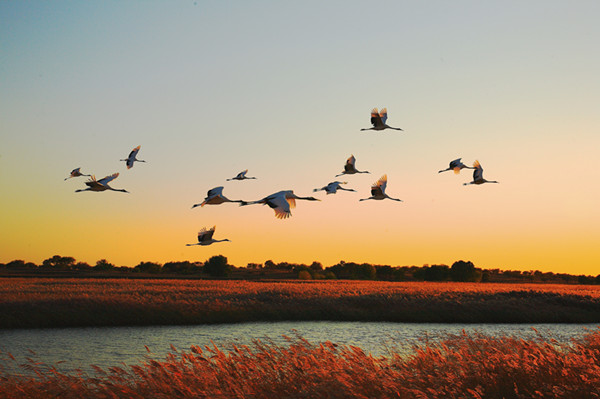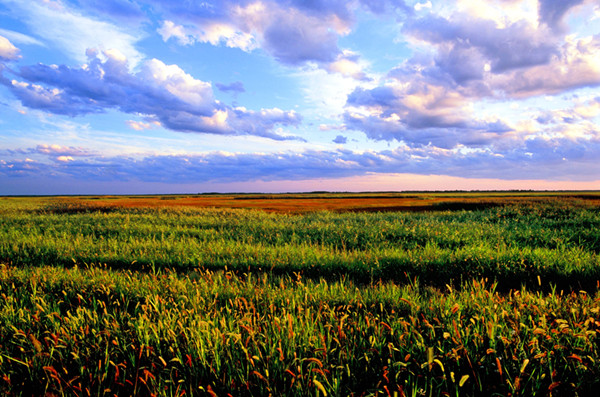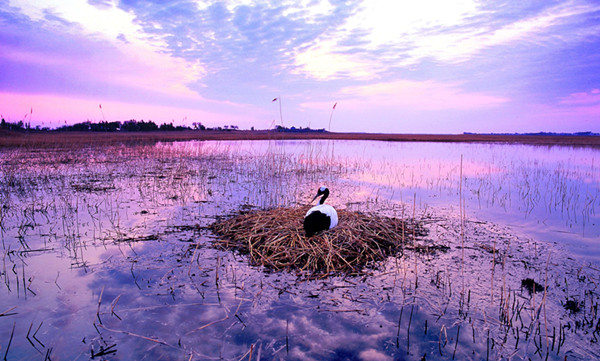Xianghai national nature reserve

Xianghai joined the Chinese National Committee for Man and Biosphere's Biosphere Reserves Network, in 1993, when its crane dance was named one of the eight wonders of Jilin province, on a par with the Changbai Mountains of the province.
The Xianghai national nature reserve is located in Jilin's Tongyu county and covers an area of 105,467 hectares. It was established in 1981 with the approval of the Jilin provincial government, and was upgraded into a national natural reserve in 1986. Xianghai made the list of the world's important wetlands in 1992, and is home to the red-crowned crane, white stork, and other rare birds. It is an inland wetland and water ecosystem nature reserve. Xianghai is an AAAA scenic area and the largest of China’s seven major wetlands.

It has the greatest abundance of species and was designated an A-level nature reserve by the World Wide Fund for Nature. The reserve has more than 20 tree species and more than 200 types of herbs. It has three rivers – the Huolin, Emutai and Taoer – crossing it and 22 large bogs and hundreds of small ones, with more than 20 types of fish. Xianghai is also home to 173 bird species, including six types of cranes, accounting for 40 percent of all crane species worldwide. It is home to the rare red-crowned crane, white-naped crane, white-head crane, grey crane, white crane, swan and golden eagle.

Crane Island
This island is 4 kilometers southwest of the Xianghai nature reserve administration and has mountains off to one side. It is covered with vegetation and shrubs and has cattails growing densely nearby, taller than a man, and domesticated red-crowned cranes, something that is not to be missed.
Museum
The local museum is a microcosm of natural life and a display of Xianghai's wetland characteristics and animals.
Xianghai Temple
There was a lama temple, the "Qinghai Temple", built in Xianghai at the beginning of the Shunzhi period of the Qing Dynasty, in 1664, but it was destroyed in 1972. Restoration work began on the remaining temple, in 1994, and Zhao Puchu, former president of the national Buddhist Association, christened it the Xianghai Temple.
Mongolian yellow elm forest
The yellow elm forest is about 60 kilometers from Tongyu county and is Asia's biggest forest of its kind, covering 50 square kilometers. The Mongolian yellow elm is a rare species that can exist in arid areas.




